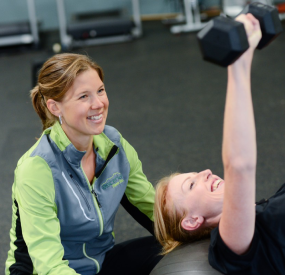#ScienceBacked #Ways #Master #Nutrition #Timing
Improving performance and overall health is made easy by aligning eating patterns with biological needs. A simple concept, but one that is difficult to implement in everyday life. Eating smarter is less about restriction and more about working with your body’s natural rhythms.
Research indicates that nutritional timing has a significant impact on energy, weight management, and recovery, just as much as food choices themselves. Put simply, eating at the right times means fewer cravings, more efficient muscle recovery, and stable blood sugar levels.
In this article, we’ve outlined five science-backed ways to master nutrition timing. The goal is to highlight solutions, tips, techniques, and simple reminders that improve your day-to-day nutrition.
1. Align Meals With Your Body’s Natural Clock (Circadian Rhythm)
The body’s circadian rhythm functions like an internal clock. It regulates sleep, hormones, physical changes, and even behavioural shifts. Eating in alignment with this rhythm helps your body process food more effectively.

If you’re trying to lose weight, it’s generally a good idea to plan your meals early in the day. This is because calories consumed earlier in the day are better utilized for energy. In comparison, late-night snacks are more likely to be stored as fat.
Breakfast and lunch are key opportunities to replenish protein, healthy fats, and complex carbohydrates when your metabolism is most active. Additionally, eating lighter in the evening supports better digestion and sleep quality.
2. Prioritize Protein Timing for Weight Loss and Recovery
Everyone knows protein is one of the most important factors for muscle repair, appetite control, and metabolic health. But how much of it do you need? Research shows that consuming 0.36 grams of protein per pound of body weight is ideal for continuous muscle repair.

Eating smarter means not only meeting your daily protein needs but also spreading that intake evenly throughout the day. A protein-rich breakfast helps stabilize blood sugar levels and reduces cravings later in the day. On the other hand, a post-workout meal with lean protein helps speed recovery and preserve lean muscle mass.
Meeting your protein goals means making simple adjustments that help you eat smarter. These can include adding Greek yogurt to breakfast, lean chicken at lunch, or nuts as a snack. Don’t just rely on a large protein-rich dinner.
3. Use Meal Timing to Stabilize Blood Sugar and Energy Levels
Meal timing affects how your body manages blood sugar. Significant gaps between meals cause spikes and crashes. These swings may lead to increased cravings, overeating, and fatigue.

A solid rule of thumb is to space meals every three to four hours. Giving your body time to absorb nutrients from meals helps stabilize glucose levels and maintain focus. Try to eat balanced meals that include protein, fiber, and healthy fats to improve digestion and prevent sharp rises in blood sugar levels.
One simple tip is to go back to the basics of meal planning. Instead of eating whenever you want, plan for breakfast early in the day, lunch in the afternoon, and dinner in the evening. Remember that it’s better to eat heavier meals early in the day and light snacks later in the evening.
4. Match Carbohydrate Intake to Activity Levels
Protein isn’t the only nutrient you need to keep an eye on. Carbohydrates act as the body’s primary fuel source. That said, eating carbohydrates in excess means that the extra fuel will be converted into body fat. Eating smarter means adjusting carbohydrate intake to match daily activity.

Timing carbohydrate-rich meals around workouts can improve performance and enhance muscle repair. Consuming more carbohydrates on training days provides access to a larger pool of energy and facilitates greater recovery. On the other hand, eating fewer carbohydrate-rich foods on rest days prevents excess calorie storage.
Keep in mind that not all carbohydrates are equal. Whole grains, fruits, and vegetables offer steady energy and more nutrients compared to refined sugars. Choosing the right foods may mean the difference between failing to and meeting your long-term fitness goals.
5. Don’t Skip Hydration Timing — It’s Part of Eating Smarter
Much like planning meals, hydration timing is a crucial variable in improving fitness and overall health. Dehydration, even mild, lessens endurance and exercise performance. However, Hydration is more than just drinking water. Timing fluid intake directly affects energy, digestion, and recovery.

Drinking water before, during, and after workouts helps regulate temperature and prevent cramps. More extensive sessions may require adding electrolyte-rich drinks to compensate for water loss due to sweating.
Hydration timing matters outside the gym, too. Your kidneys will thank you if you sip water throughout the day compared to drinking large amounts at once. As an added benefit, you’ll also use the restroom fewer times a day.
Final Thoughts
Eating smarter is not about rigid diets. It’s about making smarter decisions through minor adjustments to your diet, hydration, and nutrition timing. Choosing to overhaul your lifestyle may seem like a valid approach on paper, but it isn’t sustainable in the long term.
It’s much better and more accessible to commit to smaller, more achievable adjustments, such as matching carbohydrates to activity levels. When it comes to eating smarter, slow and steady progress always wins the race.












